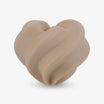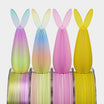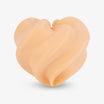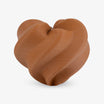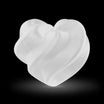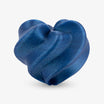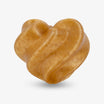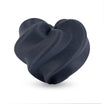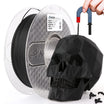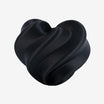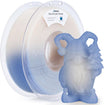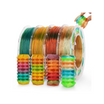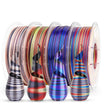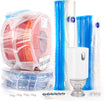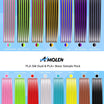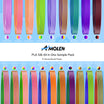The final quality of a 3D print depends as much on the filament's condition as it does on the printer's calibration. Issues like rough textures, weak layer bonds, or excessive stringing are frequently blamed on the machine when the real cause is the material itself. Most 3D printing filaments are "hygroscopic," meaning they readily absorb moisture from the air. When this damp plastic is heated, the trapped water turns to steam and disrupts the printing process. Taking the simple steps to dry and properly store your filament is a foundational practice for achieving consistent and high-quality results.
The Telltale Signs of Wet Filament
You can diagnose wet filament by looking for a few common signs. These symptoms show up in the sounds from the printer, the quality of the finished print, and even the feel of the raw plastic.
Sign 1: Popping and Crackling Sounds from the Nozzle
The most obvious sign of wet filament is the sound it makes. If you hear popping, hissing, or crackling noises coming from the hot nozzle during a print, it means that trapped water is boiling into steam. This is a clear indicator that your filament has absorbed too much moisture.
Sign 2: Poor Print Quality and Appearance
Moisture negatively affects the look and feel of the final print in several ways:
- Excessive Stringing or Oozing: The runnier consistency of wet filament is the direct cause of Excessive Stringing or Oozing, a defect that appears as unwanted strings of plastic left behind when the nozzle travels.
- Rough or Fuzzy Surfaces: Steam bubbles create a textured and uneven surface on the print, rather than the smooth finish you would expect.
- Weak, Brittle Parts: The steam prevents layers from bonding together properly. This results in prints that are physically weak and can often be pulled apart easily. You may also notice gaps or inconsistent extrusion throughout the part.
Sign 3: Raw Filament is Brittle and Snaps
You can sometimes spot the problem before even starting a print. Filament that has absorbed a lot of water, especially PLA, becomes extremely brittle. If the filament snaps easily when you bend it, it is a strong sign that it needs to be dried.
Which Materials are Most at Risk?
Not all plastics absorb water at the same rate. It is important to know how sensitive your material is to humidity.
- Very High Sensitivity (Dry immediately): Nylon, Polycarbonate (PC), PVA
- High Sensitivity: PETG, TPU (Flexible Filaments)
- Moderate Sensitivity: PLA, ABS, ASA
- Very Low Sensitivity: Polypropylene (PP)
Materials with higher sensitivity, such as Nylon or PETG, demand more careful handling. Diligent drying and immediate storage after use are essential for these filaments to prevent common print failures.
Three Methods for Drying Filament
Active drying uses heat to safely bake the moisture out of a filament spool. If your filament is wet, one of these three methods can restore it.
Method 1: Use a Dedicated Filament Dryer
This is the safest and most reliable option. A dedicated filament dryer is an appliance built specifically to circulate air at a precise, controlled temperature. This dries the spool evenly without any risk of melting it. Many models also allow you to print directly from the dryer, keeping the material protected until it reaches the nozzle. While they are an added cost, their effectiveness and safety make them a valuable tool.
Method 2: Use a Food Dehydrator
A food dehydrator is a great, budget-friendly alternative because it works on the same principle as a dedicated dryer. The main drawback is that a standard filament spool won't fit inside. To use this method, you will likely need to cut out the center of the stacking trays to create a large enough space for the spool.
Method 3: Use a Convection Oven (With Extreme Caution)
Using a kitchen oven is possible but very risky and should be treated as a last resort. Ovens often have inaccurate temperature controls and can fluctuate dramatically, which can easily ruin an entire spool of filament by melting it. If you choose to try this method, you must verify the temperature with a separate thermometer and never leave the oven unattended. Also, be aware that heating plastic in an appliance used for food can risk chemical contamination.
Recommended Drying Temperatures and Times
Using the correct heat setting and time is crucial for good results. The temperatures and times below are a reliable starting point for the most common materials.
| Filament Type | Temperature (Celsius) | Temperature (Fahrenheit) | Minimum Time |
| PLA | 40-45°C | 104-113°F | 4 - 6 hours |
| PETG | 60-65°C | 140-149°F | 4 - 6 hours |
| ABS/ASA | 75-80°C | 167-176°F | 4 - 6 hours |
| Nylon | 80-95°C | 176-203°F | 8 - 12+ hours |
| TPU | 50-55°C | 122-131°F | 6 - 8 hours |
| PC | 120°C | 248°F | 8 - 12+ hours |
How to Store Filament to Keep It Dry
Once your filament is dry, proper storage is crucial to prevent it from absorbing moisture again. This involves two core steps:
Step 1: Choose a Fully Sealed Container
The core purpose of the container is to seal off the filament from humid, outside air. Depending on your budget and needs, there are several good options:
- Good: Large, Ziploc-style freezer bags can be used for short-term storage. They are simple and convenient.
- Better: Vacuum-sealed bags are more effective because they remove most of the air from around the spool.
- Best: The most reliable long-term solution is a storage bin with a rubber gasket in the lid, often sold as a "weatherproof" or "gasket" box.
Step 2: Place a Desiccant Inside the Container
A desiccant is used to absorb any moisture remaining inside the container or any that might seep in.
- Common Type: The small, disposable silica gel packets often found in new filament packaging.
- Recommended Type: A more practical and sustainable option is reusable "indicating silica beads."
The Use and "Recharging" Method for These Silica Beads:
The biggest advantage of indicating silica beads is that they "tell" you when they are full of water. For example, they might be orange when dry and turn dark green when saturated with moisture. Seeing the color change means it's time to "recharge" them.
The recharging method is very simple: Spread the color-changed beads on a baking tray and bake them in an oven at a low temperature, around 100-120°C (212-248°F), for several hours until they return to their original dry color. This way, they can be reused almost indefinitely.

Protect Your Filament, Perfect Your Prints!
Consistent, high-quality 3D printing depends on a simple but crucial routine. Actively dry your filament, especially sensitive materials or any spool that has been left in the open. After a print is done, immediately place the filament back into an airtight container with a working desiccant. This small amount of effort in filament care is the most effective way to eliminate common print failures and ensure you get reliable results from your machine.








